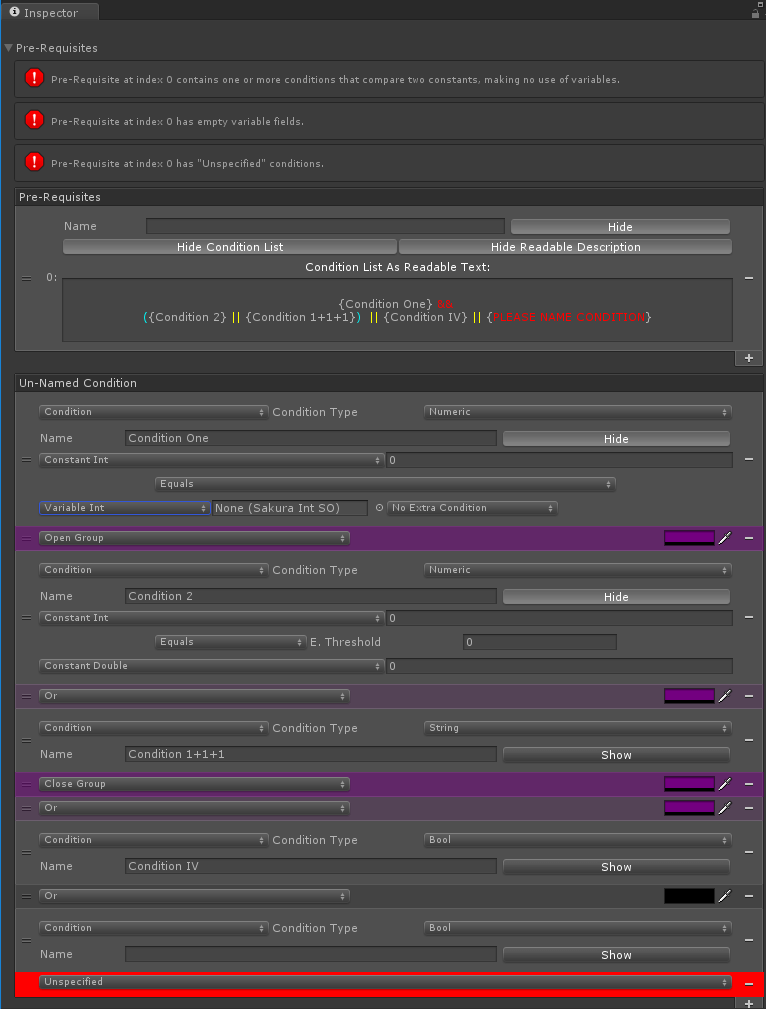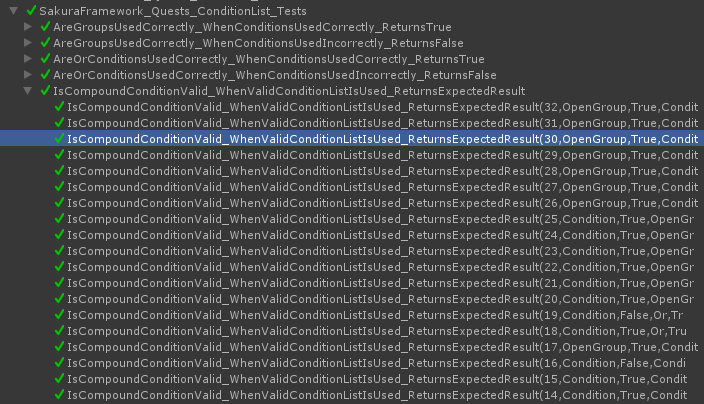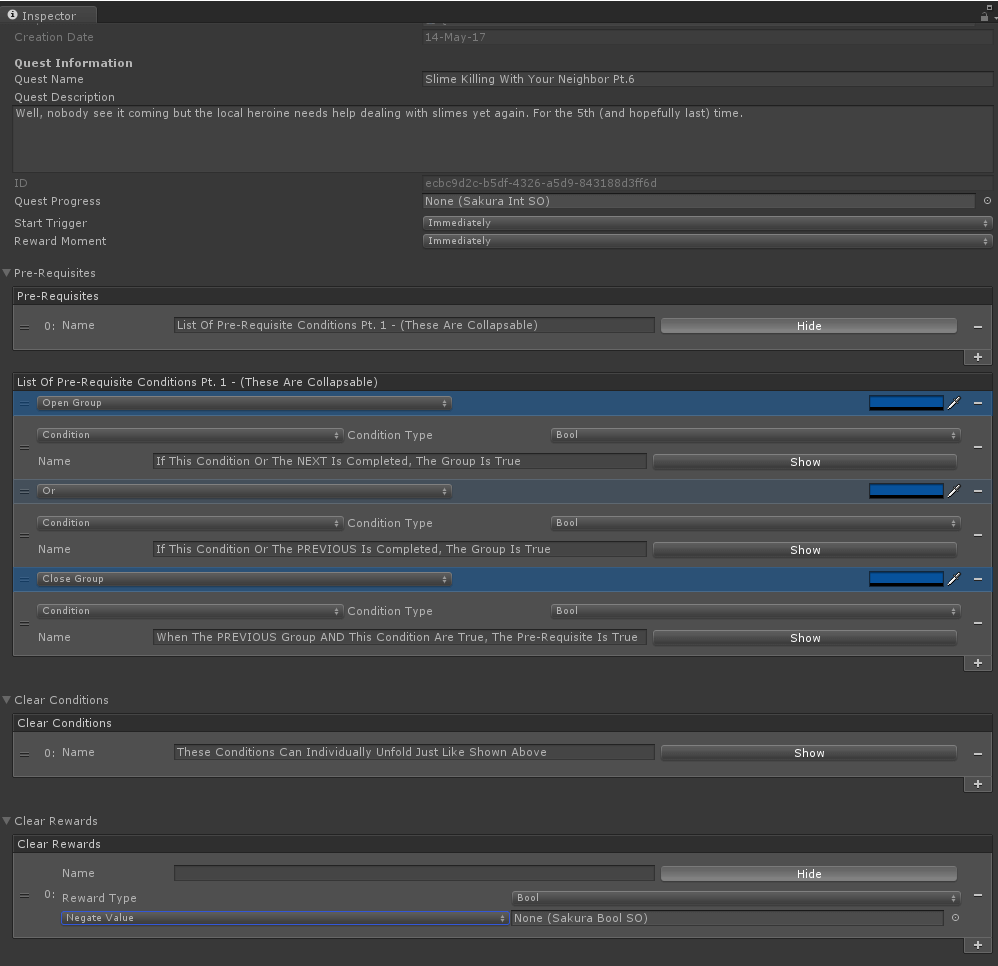Last time I showed this little quest system it was but a bare skeleton without functionality (other than redrawing itself as needed) and now it is finally functional.
Added some more visual aids for easy readability including a human readable display of the conditions, warnings and error boxes for invalid fields and content and the events that will make it all happen once it is up and running with other systems.

And to be honest, there is no other purpose to this post other than bragging a little. Sure, this is far from the best looking custom inspector or the most effective at is intended job, but I can proudly say I made it myself.
I’m sure taking my sweet time with these systems but that is because:
- Like I said previously, this is intended so it is never needed for me to never make a similar system again.
- Make it loosely coupled so it can interact as needed with any future system I make effortlessly. (Not to mention it might be a little more efficient to call an event than hard-coding the conditions on a big ball of mud of code).
- I want this to be as bug free as possible to avoid future headaches (TDD anyone? Side note: I still suck at it.)
- And most importantly, so time later on can be spent on designing quests (unlockables) rather than implementing them.
Again, just a little “Hey this is what I’ve been doing” kind of post to indicate I’m still alive.
And as always, to anyone that read it this far, thank you for reading my blog :3




